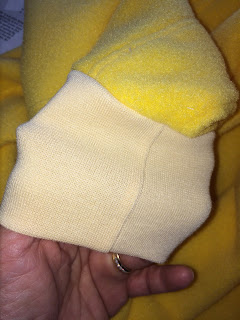Presenting my very first handmade bag:
Small, delightful, chock-full of beautiful details, practical are just some of the words to describe the Bia Bag. And best of all, the pattern is free! It was designed by Maria Wallin of Pink Pony Designs and can be downloaded through Craftsy. Difficulty is rated as "Intermediate" but a newbie to bagmaking but not to sewing can easily tackle this pattern. I have reviewed this pattern here at Pattern Review.com.
As a novice to bagmaking, I encountered a few challenges but nothing that could not be solved by researching online and reading a lot of references. So I just want to share some tips that might prove helpful to a novice trying out this pattern:
Interfacing
I am quite familiar with the different kinds of interfacing used for garment sewing. Bagmaking is a totally different world. I didn't realize there were so many types to choose from. I am sure experience will be the best teacher in the long run.
I ended up using two types of interfacing. For the exterior body and lining, I used a medium weight interfacing by Pellon called Shape Flex (SF 101). This is a fusible woven and I fused two layers for the exterior to add more structure without making it stiff. I also interfaced the lining with one layer to make it more durable.
For the base of the bag, I used a thicker fusible interfacing called Peltex 71F. This has a cardboard like texture and a bit thicker. I made sure to trim off the seam allowance on the base interfacing so as not to add bulk to the seams.
Hardware
I had so much fun choosing hardware for my bag. I thought the antique brass finish went well with the muted colors of my fabrics.
Key holder
Tuck Lock
Riri Zipper
D-ring
Except for the zipper which was not available in the color I wanted, all my hardware including the leather strap used to make the handles were purchased from BuckleGuy.com. I highly recommend this site. The products are topnotch quality!
Zipper
I have sewn all kinds of zippers during garment construction yet I still learned a couple of new things like how to cover a zipper tape with decorative fabric as shown below
or how to cut the zipper ends and reattach them successfully as seen below.
I practiced on a cheaper zipper before attempting to work on my actual hardware. I found this
YouTube clip by Erin Erikson on How to Reattach a Zipper Pull really helpful.
Bag Handles
The pattern had no instructions for making the handles since it relied on purchased ready made ones. I browsed Etsy before deciding to make my own leather strap. That way, I was able to customize the length and the color to my liking.
I bought this 60" long 5/8" wide genuine leather strap from Buckle Guy. It was quite thick and had a nice tan color, perfect for my bag! With the help of the site's customer service, I was able to decide on the correct size of Chicago screws to use. For this strap which had a thickness of 3.2-4 mm, I used 3/8" sized screws.
It was a bit challenging trying to insert the screws. I used leather puncher to create the holes.
To attach the handles to the bag I used a brass D-ring and sewed my own tabs.
To sew my tabs, I relied on instructions I found in "The Better Bag Maker" book by Nicole Mallalieu. On page 100, she had instructions on how to make an O-ring tab which I adapted to my project.
Decorative Details
What I love about this bag pattern is it allowed me to customize the tiny details like adding lace trim, to my inside pockets as seen below:
And here are some more pics of the lovely details:
Last but not least, all the fabrics I used for the exterior of the bag were purchased from Fabric.com and they are part of the Tim Holtz Eclectic Elements line. For the lining, I just used a quilting cotton from my 15-year old stash.
And here is the bag being modeled by yours truly!
For reference the bag measures 10-1/4" H x 9-1/2"W x 2-1/2"D and I measure 4'10ish"!


































































